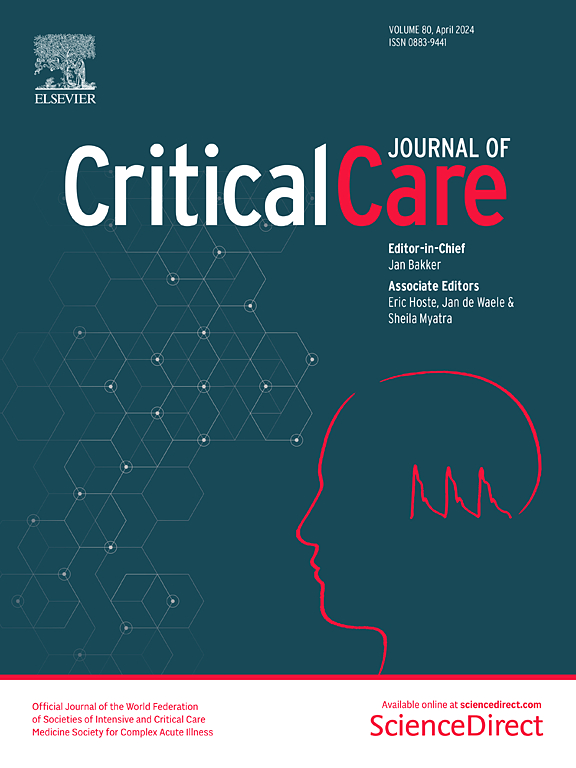Lactate infusion improves cardiac function in a porcine model of ischemic cardiogenic shock
IF 8.8
1区 医学
Q1 CRITICAL CARE MEDICINE
引用次数: 0
Abstract
Cardiogenic shock (CS) is associated with high mortality and medical therapies have failed to improve survival. Treatment with lactate is associated with improved cardiac function which may benefit this condition. Comprehensive hemodynamic assessment of lactate administration in CS is lacking, and the mechanisms underlying the cardiovascular effects of lactate in CS have not yet been elucidated. In this study we aimed to study the cardiovascular and cardiometabolic effects of treatment with lactate in experimental ischemic CS. In a randomized, blinded design, 20 female pigs (60 kg) were studied. Left main coronary artery microsphere injections were used to cause CS, defined as a 30% reduction in CO or mixed venous saturation (SvO2). Subjects were randomized to receive either intravenous exogenous lactate or euvolemic, equimolar saline (control) for 180 min. Positive inotropic control with dobutamine was administered on top of ongoing treatment after 180 min. Extensive hemodynamic measurements were obtained from pulmonary artery and left ventricular (LV) pressure–volume catheterization. Furthermore, endomyocardial biopsies were analyzed for mitochondrial function and arterial, renal vein, and coronary sinus blood samples were collected. The primary endpoint was change in CO during 180 min of treatment. Arterial lactate levels increased from 2.4 ± 1.1 to 7.7 ± 1.1 mmol/L (P < 0.001) during lactate infusion. CO increased by 0.7 L/min (P < 0.001) compared with control, due to increased stroke volume (P = 0.003). Notably, heart rate and mean arterial pressure did not differ significantly between treatments. End-systolic elastance (load independent contractility) was enhanced during lactate infusion (P = 0.048), together with LV ejection fraction (P = 0.009) and dP/dt(max) (P = 0.041). Arterial elastance (afterload) did not differ significantly (P = 0.12). This resulted in improved ventriculo-arterial coupling efficiency (P = 0.012). Cardiac mechanical efficiency (P = 0.003), diuresis (P = 0.016), and SvO2 (P = 0.018) were increased during lactate infusion. Myocardial mitochondrial complex I respiration was enhanced during lactate infusion compared with control (P = 0.04). Concomitant administration of dobutamine on top of lactate resulted in further hemodynamic improvements compared with control. Lactate infusion improved cardiac function and myocardial mitochondrial respiration in a porcine model of CS. The hemodynamic effects included increased CO mediated through stroke volume increase. These favorable cardiovascular effects may benefit patients with CS.求助全文
约1分钟内获得全文
求助全文
来源期刊

Critical Care
医学-危重病医学
CiteScore
20.60
自引率
3.30%
发文量
348
审稿时长
1.5 months
期刊介绍:
Critical Care is an esteemed international medical journal that undergoes a rigorous peer-review process to maintain its high quality standards. Its primary objective is to enhance the healthcare services offered to critically ill patients. To achieve this, the journal focuses on gathering, exchanging, disseminating, and endorsing evidence-based information that is highly relevant to intensivists. By doing so, Critical Care seeks to provide a thorough and inclusive examination of the intensive care field.
 求助内容:
求助内容: 应助结果提醒方式:
应助结果提醒方式:


